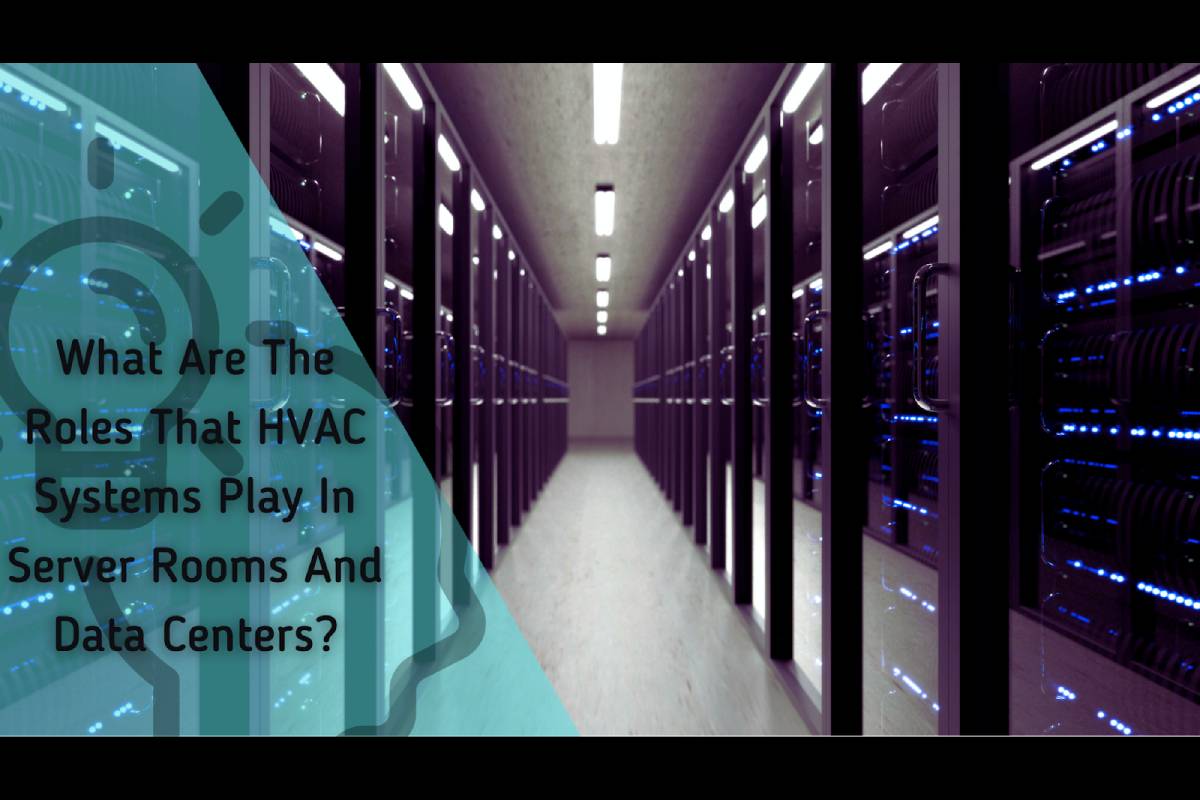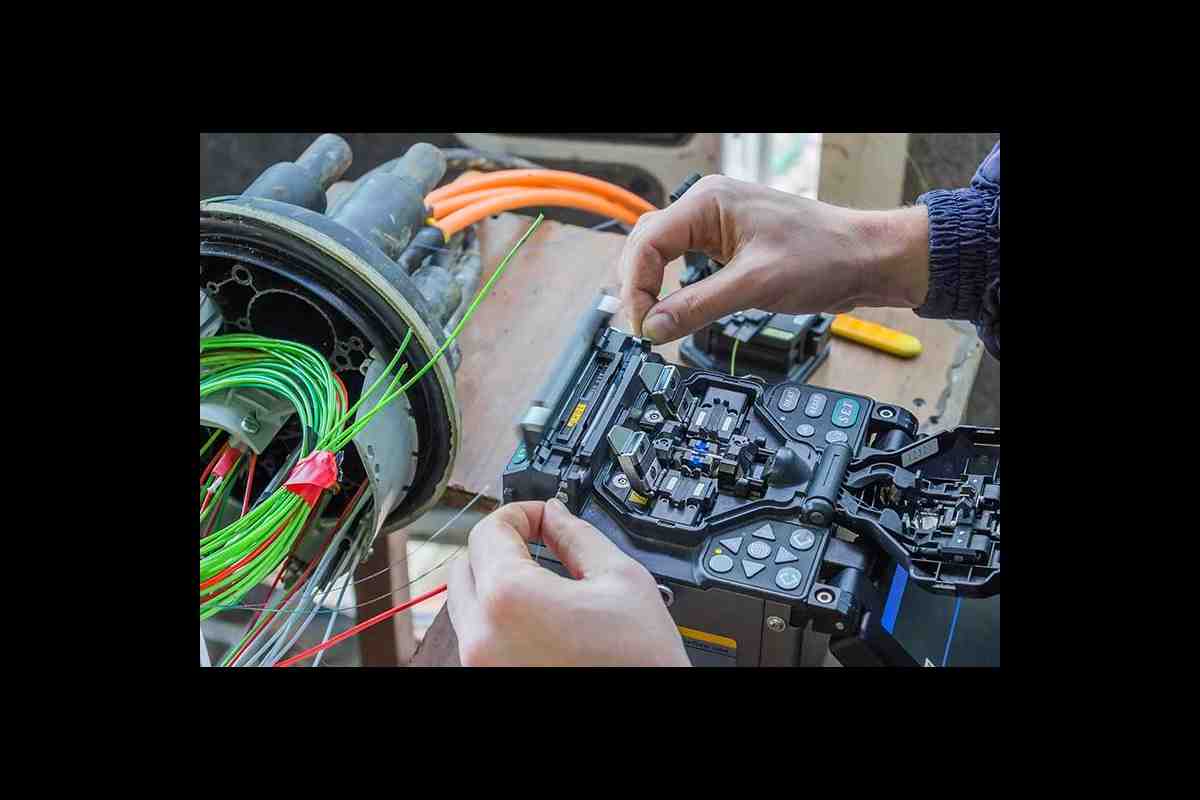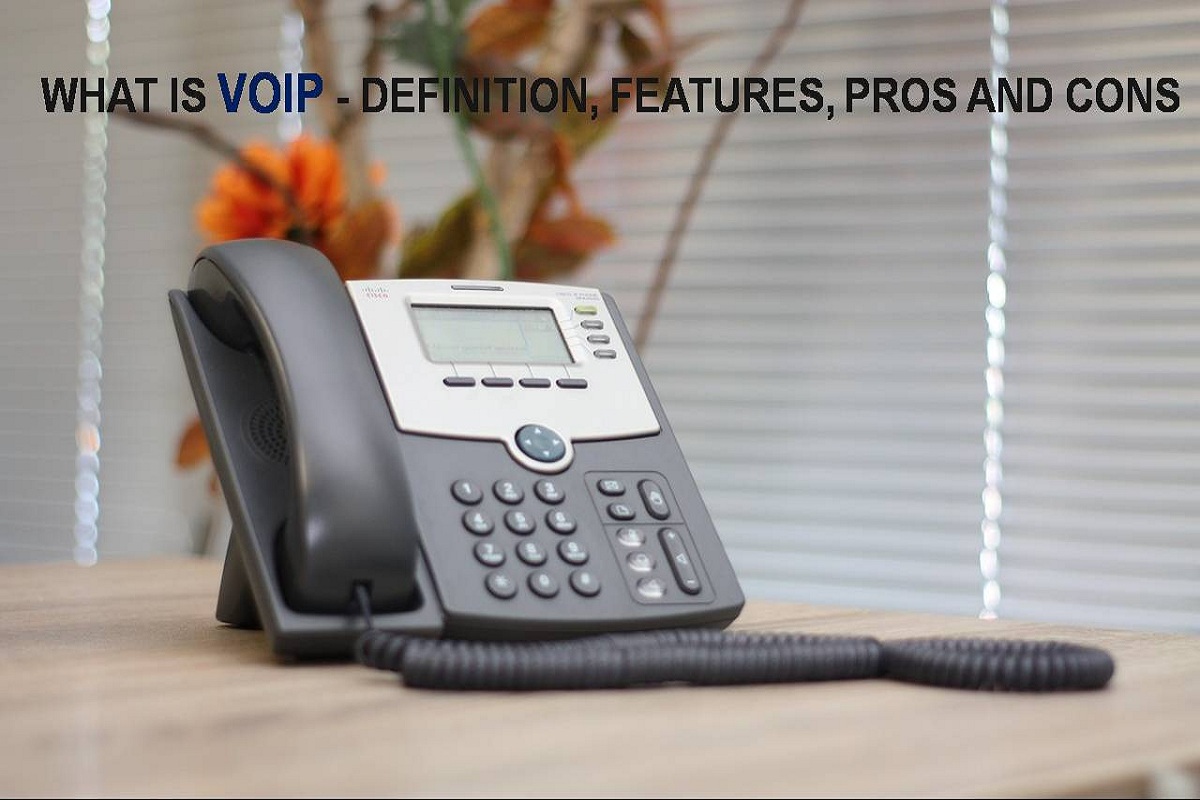

The 5 Critical Roles of HVAC Systems in Server Rooms and Data Centers
HVAC: The Quiet Guardian of Your Data Center
Think of HVAC as the unsung hero that keeps your server room from turning into a sauna or an arctic tundra. When temperatures swing, humidity skyrockets, or the air gets downright dusty, that glossy business card of a laptop or a terabyte of data can turn into a hot mess. Below we’ll uncover the five super‑powers that HVAC brings to the table.
Table of Contents
- Regulating Temperatures in Server Rooms
- Maintaining Optimal Humidity Levels
- Keeping Air Clean and Clear
- Shielding Equipment from Contaminants
- Ensuring Indoor Air Quality and Compliance
- Perfecting Air Distribution
- Maximizing Energy Efficiency
- Bottom Line
Regulating Temperatures in Server Rooms
Data centers thrive when the air stays at a sweet spot—usually around 20–24 °C (68–75 °F). HVAC systems keep this range steady, battling the heat generated by thousands of humming servers. Picture a thermostat with a superhero cape, making sure the room doesn’t feel like a pressure cooker or the Arctic.
Maintaining Optimal Humidity Levels
Humidity is a double‑edged sword. Too little (dry air) can static‑charge sensitive components; too much (wet air) invites mold and corrosion. HVAC systems use dehumidifiers or humidifiers to hover around that 30–40 % sweet spot. Think of it as the perfect setting for a tropical rainforest—but only for your servers.
Keeping Air Clean and Clear
Dust, pet hair, vapor, you name it—everything that could get into the server’s heat sink can be catastrophic. HVAC’s filtration jokes: “I see only the good stuff.” High‑efficiency filters trap particles down to 0.3 µm, preventing clogs that would otherwise make your equipment sigh.
Shielding Equipment from Contaminants
Beyond particles, chemical vapors (like from paint or cleaning agents) can damage circuits. HVAC systems include scrubbers or activated carbon filters that coax out those nasty fumes, so your servers stay healthy, unbothered, and ready to perform.
Ensuring Indoor Air Quality and Compliance
Industries set standards—think ISO 50001 or ASHRAE 90.1. HVAC systems help you meet them by keeping CO₂ levels and temperature spikes within limits, which boosts building certification scores and saves you from inspection headaches.
Perfecting Air Distribution
Evenly spread air translates into lower hotspots. HVAC’s ductwork works like a well‑orchestrated symphony, delivering cool air at the right spots and exhausting warm air everywhere else. This keeps your racks from developing “hot‑spots,” which can throttle performance.
Maximizing Energy Efficiency
Running HVAC is energy‑hungry, so efficiency matters. Systems now feature variable speed fans, smart thermostats, and adaptive controls that throttle power when the load drops. The result? Lower electric bills and a happier planet.
Bottom Line
All part of the HVAC repertoire—temperature control, humidity regulation, air purification, contaminant shielding, compliance, distribution, and efficiency—forms the invisible shield that protects your data and keeps it humming. Think of HVAC as that reliable friend who always shows up on time, no matter how wild the weather gets outside.
Regulating Temperatures in Server Rooms And Data Centers With HVAC Systems
Keeping Your Data Center Cool: Why Temperature Matters
Why Temperature Is a Big Deal
Picture this: your rack of humming servers in a tight, buzzing room. One tiny spike in heat can turn that quiet hum into a catastrophic blaze, ruining hours of data and splashing the whole budget into the red. On the other side of the spectrum, chill vibes can do no good either—equipment that gets way too cold starts acting like a nervous toddler, slowing down or even shutting down. The sweet spot? A steady, comfortable climate that keeps your gear running like a well-oiled machine.
HVAC: The Unsung Hero
Enter HVAC, the superhero of temperature control. It’s all about keeping the environment chill without tipping over into the ice room. Below are the moves HVAC makes to keep the heat (and the cold) in check.
Cooling Playbook
- Deploy Smart Cooling Systems: Air conditioners and heat exchangers match the load, so the room stays just right.
- Smart Sensors Keep an Eye Out: A network of sensors watches the temperature tick‑tock and nudges the cooling system for a perfect fit.
- Maintenance Saves the Day: Routine checkups and clean-ups keep the HVAC humming at its best.
- Insulation & Sealing: Think of it as an invisible barrier that blocks unwanted outside air from messing with your server room’s ambiance.
Texas & Beyond: Bringing the Cool to the Heat
When the Southern heat turns up, businesses in Texas—and nearby states—reach out for HVAC pros who know their trade. These experts bring:
- City‑sized Installation Skills: From Dallas’s tech hub to smaller towns, they set up systems that fit every space.
- Custom Solutions: Not every server room is the same; tail‑or‑made cooling adapts to each unique environment.
- Experienced Support: Ongoing maintenance keeps your systems from slipping into the chill zone.
Because the South Coast is hotter than most places in the U.S., Dallas HVAC installations are especially crucial. They’re the secret sauce that ensures your equipment stays hot‑and‑on‑point, not frozen, and outlives the competition.
Maintaining Optimal Humidity Levels in Server Rooms And Data Centers With HVAC Systems
Keeping Your Server Room Cozy… but not Too Cozy
Why Humidity Matters (And Why You Should Care)
Think of your server room like a very finicky anti‑petri dish. Too much moisture turns into condensation drama and folks have to wrestle equipment with a wet blanket sensation. Too little moisture sparks static shocks that make your gear feel like it’s on a runaway roller coaster. Balancing these moisture levels is essential for keeping the data flowing smoothly.
The HVAC “Air‑Police” Squad
Your HVAC system is the superhero that fights humidity villains. Here’s what it can do:
- Humidifiers & Dehumidifiers: Curate the perfect moisture rhythm.
- Humidity Sensors: Eyes that spot spikes and dips, adjusting settings on the fly.
- Regular Tune‑Ups: Keep the system clean and free from mold or bacteria, so it runs without a hiccup.
- Ventilation: Ensures that air circulates like a well‑orchestrated jazz band—no stagnant pockets of dampness.
Home‑Build or Hire Pros?
Trying to DIY your HVAC could be like attempting a DIY donut recipe without a recipe—ends up with a sticky mess. Professional HVAC services adapt solutions tailored to your specific data‑center vibes, ensuring the equipment stays robust and performs like a well‑tuned machine.
Bottom Line: A Moisture‑Balanced Server Room Means No Surprises
Work it with an experienced team, and you’ll get a resilient, happy, and efficient environment that keeps your servers humming, not outright slumping. Happy humidities, happy drones—let it stay just right.
Maintaining Clean Air In Server Rooms And Data Centers With HVAC Systems
Why Server Rooms Hate Dust (and the Air Filter Heroes)
When your computer servers get a dusty makeover, the whole data‑center gang starts to worry. Air filters keep the environment squeaky clean, so that every processor, switch, and hard drive can keep running as if they were born in a sterile biosphere. Below are the top reasons that a good filter is the unsung MVP of every server room.
The 5 Must‑Know Roles of Air Filtration
- Dust Buster: Tiny particles, big trouble. Even a microscopic speck can clog circuitry or cause spark‑sparking. Filters trap these bits before they chaos the metal.
- Microbe Minder: Fancy ingredients like bacteria and mold love warm, moist spaces—exactly what servers offer. A high‑efficiency filter keeps these bacteria at bay so your data stays clean and infection‑free.
- Heat Management: With cooler air, components stay below their heat limits. Think of a filter as a tiny personal air‑conditioner that keeps the room frigid enough to avoid overheating.
- Corrosion Suppressor: Moist droplets can rust tracks and circuitry. Filters pull in humidity, meaning fewer rust stains and longer device lifespans.
- Reliability Booster: When air froths with dust, the HVAC system works overtime, consuming more electricity and producing noise. A clean system is quieter, greener, and less likely to trigger hardware failures.
Quick Takeaway
So, next time you’re arranging racks and circuits, remember: a great filter is like a spa day for your servers—removing grime, relaxing the heat, and keeping everything healthy. Keep it clean, keep it running!
Protecting Equipment from Contaminants
Keeping Your Servers Sneeze‑Proof
Picture this: a server room soaked in dust, pollen, and all sorts of airborne gossip. Those tiny particles sneak onto circuit boards, fans, and other sensitive gear, turning your equipment into a chaotic mess of “why did you even bother?” trouble. But fear not—elegant air filtration systems are the unsung heroes that keep your tech clean and smiling!
Why Dust Can Cause a Server Meltdown
- Dust & pollen—they stick where they’re not wanted, slowing fans and clogging up heat‑sinks.
- Other pollutants—chemical fumes and fine grime can degrade delicate semiconductor components.
- Result—thanks to the buildup, you’ll see more errors, slower performance, and less lifespan.
How Air Filters Save the Day
Think of these filters as the bouncers of your data center: they catch everything before it can punch a ticket in the hardware. By trapping dust and other nasties, they prevent the dreaded “server hiccup” syndrome, ensuring:
- Equipment stays lively and runs smoothly.
- Longevity gets the reward of a clean, happy environment.
- Operational efficiency stays on point—no surprise pauses or throttling.
Bottom Line
With a solid air filtration system in place, your servers will thank you—no more dust‑bunnies, no more performance hiccups. Treat your tech like a VIP guest, give it the clean slice of life it deserves, and watch it thrive!
Maintaining Indoor Air Quality
Breathe Easy: Why Every Server Room Should Have Super Clean Air
If you’re soaking up dusty server racks at your office, you might not realize that the invisible culprit—tricky pollutants—could be doing more harm than you think. Think about it: sprayed with the same mighty air that lives in the datacenter, you’re at risk of turning a clean workstation into a sneeze factory.
Cool Facts About Air Filters
- Say Goodbye to Bacteria: Filters swoop in and clean out the microscopic nasties that usually hide in server aisles.
- Virus Vacuum: Imagine a tiny vacuum that snags viruses before they can jump from one device to another.
- No More Bad Breaths: With cleaner air, the chances of dealing with allergies and coughs drop dramatically.
- Health Boost: A better environment means nobody has to deal with long-term respiratory troubles.
What Happens When Filters Fail
When your filtration system goes MIA, the air quality takes a hit—spoiler alert: that means respiratory woes and a lot more sneezes for everyone in the room.
Why It Matters:
Keeping the air pristine isn’t just a courtesy—it’s essential for everyone’s wellbeing. Even the machines on the other side of the server racks feel it. An efficient filter keeps the workplace healthy, safe, and happy.
Feel the Difference
Put on your superhero cape (figuratively, of course) and welcome the cleanest air your server room can offer. That’s the real power behind every great filtration system.
Ensuring Data Integrity
Keeping Your Data Safe from Dusty Drama
Did you know that a speck of dust can turn a shiny hard‑drive platter into a slapstick comedy of errors? Dust likes to sneak into server rooms and data centers, sticking like a bad relationship that erases your favorite playlists and robs your data of its spark.
Why dust is the real villain
- Read/write chaos: A single dust grain can throw off a spinning platter, causing those dreaded “read error” messages that make you want to run a marathon of frustration.
- Data loss drama: Over time, a thick coat of debris is like a slow‑moving brick wall that can crush and erase whole databases—classic pile‑up scene, but with your precious data.
Enter the hero: Air filtration systems
Picture these systems as your data centre’s personal bodyguard: they filter out airborne troublemakers before they even get a chance to mingle with your servers. The result? Peace of mind and data integrity—no more dusty fiascos or late‑night “is it really lost?” moments.
Bottom line
Keep your servers dust‑free, keep your data safe, and let air filters do the heavy lifting. Because nothing should be more surprising than a mundane server room turning into a dust‑filled disaster movie—unless you’re aiming for real suspense!
Compliance with Industry Standards
Keeping Your Data Center Fresh
Did you know that there are real standards that say formality behind a glowing server room isn’t just a nice idea—it’s a rule? Enter the ASHRAE (American Society of Heating, Refrigerating, and Air‑Conditioning Engineers). They set the gold‑standard for temperature and humidity in any place where racks of precious electronics sleep.
Why Air Filtration Doesn’t Just Look Cool
- Protects the gear: Think of it like a superhero cape for your servers—blocking the fine dust, nasty microbes, and all those airborne villains.
- Keeps the air clean and comfy: Your data center can feel like a spa instead of a dusty attic.
- Guarantees data fidelity: If the air is pure, the chance of data corruption shrinks—because nothing out of place goes unnoticed.
- Keeps you legit: Sticking to industry standards means you won’t run into regulatory headaches later.
It’s All About Regular Upkeep
Air filters are most effective when they’re cleaned and replaced on schedule. A neglected filter is like a traffic jam in your HVAC—eventually, everything slows down, temperature spikes, and equipment starts stalling. The bottom line? A tidy filter keeps your equipment humming like a well‑tuned orchestra, and the internal environment stays safe, healthy, and perpetually pressure‑free.
Achieving Optimal Air Distribution In Server Rooms And Data Centers With HVAC Systems
Keeping Your Server Room Cool – Because Heat Is Not a New Product Feature
In the high‑stakes world of server rooms and data centers, air distribution isn’t just a nice-to-have; it’s the difference between smooth operations and a “server sauna.” If the hot spots aren’t snuffed out, you’re not just losing performance—you’re basically putting your hardware in a permanent mug‑hot environment.
Why HVAC Is the MVP of Airflow
- Smart Jets and Fans – Think of ducts and vents as your duct‑tape design, but with less duct tape. Properly placed jets push cool air where it matters.
- Smart Sensors – Airflow sensors are like the smartwatch for your HVAC, constantly checking the flow and nudging the system for tweaks.
- Maintenance Isn’t Optional – Clean filters and routine checks keep the system humming. Neglect and you’ll get the dreaded “foul air” that can fry your gear.
- Seal the Deal – Insulation and tight seals keep outside drama (humidity, temperatures) from crashing the party inside.
Benefits of Bullet‑Proof Cooling
Every time a server stays within its sweet spot, you’re not just avoiding a costly shutdown—you’re turning that energy bill into a budgetable line item. Here’s what you gain:
- Less Equipment Damage – A stable environment means your units run smoother.
- Lower Energy Costs – Efficient airflow means HVAC doesn’t have to work overtime.
- ⌛ Longer HVAC Lifespan – With proper care, your cooling system survives longer, saving you future replacement chaos.
Ready to Keep It Cool?
Call up local HVAC pros and ask them to tailor a solution that’s as unique as your server rack layout. With the right expertise, you’ll have a consistent, chill vibe—no hot spots, no humidity scares, just pure, sweet data crunching bliss.
Maximizing Energy Efficiency In Server Rooms And Data Centers With HVAC Systems
Keep Your Server Room Cool—And Your Bills Low
Why HVAC Lets Your Data Centre Run Smoothly
In the world of server rooms and data centres, a good chill can make or break performance.
- The more energy you waste on cooling, the bigger your electric bill grows.
- Hard‑working HVAC that isn’t up to snuff can kill equipment faster than a guilty‑pleasure crime spree.
- Keeping temperature steady means the servers stay healthy and the data stays safe.
Get the Gear Right
First things first: install energy‑savvy gadgets. Think variable‑speed pumps and high‑efficiency filters. These components do more with less, and they keep the system from running in overdrive.
Smart Control is the New Black
Modern automation can save you a ton of watts. By letting software tweak fan speed, pressure, and airflow in real time, you skip the guesswork and head straight to the sweet spot where power usage is minimized and cooling is adequate.
In short, a digital thermostat with a GPS for data centres is the way to go.
The Dirty Work—Cleaning and Servicing
Even the slickest HVAC system will run out of breath if its filters get caked. Regular maintenance and deep-cleaning keep the air moving freely, which, in turn, means the units don’t work overtime to make up for the blockage.
Fit it to the Square Footage
You’ll never survive a one-size-fits-all cooling solution. Be sure the HVAC is sized (in horsepower, BTU, etc.) for exactly how many J‑boxes the room holds and how hot it can get. Misfitting leads to wasted effort—either under‑cooling and crashes or over‑cooling and wasted energy.
Get the Pros On Board
Consider a qualified HVAC team who can read your data centre’s unique needs— from rack density to ambient heat. They’ll design custom, budget‑friendly layouts that maximize performance while shaving down your energy bill.
If the right professionals are in your corner, your HVAC systems will operate at peak performance, and you’ll enjoy both higher equipment longevity and happier, slimmer invoices.
Bottom Line
Why HVAC Is the Unsung Hero of Server Rooms
Picture your data center as a high‑tech spa – only instead of massages, it’s all about keeping your servers cool, dry, and humming. That’s where HVAC steps in: a silent guardian that manages temperature, humidity, air flow, and energy usage.
What Makes the HVAC Marvelous
- Temperature Control – keeps the heat at bay so server processors don’t sweat.
- Humidity Regulation – stones out the moisture that could turn components into weird puddles.
- Air Filtration – acts like a bodyguard, picking out dust and other nasties.
- Air Distribution – ensures every rack gets the right amount of fresh air.
- Energy Efficiency – saves both money and the planet by smartly balancing cooling loads.
Why You Need a Pro Team
If you’re hunting for an HVAC service, you’ve got better choices than a ton of “DIY” guys. Experienced pros know the tricky twists of server room design – from airflow blocking by racks to the danger of low‑velocity zones. They also dream in cooling curves that match your equipment’s unique appetite.
Long‑Term Benefits of Smart HVAC
- Fewer equipment failures – no one likes a server that pops like a popcorn kernel.
- Lower energy bills – because efficient cooling is cheaper than premitum air conditioning.
- Increased equipment lifespan – keep your investment alive longer.
- Minimal downtime – which means you keep collecting revenue, not poring over error logs.
The Bottom Line
Think of a quality HVAC system as a backstage pass for your servers. It protects, smooths, and keeps everything running like a well‑tuned orchestra. So when you drill down into that service quote, make sure you’re talking to people who actually know the backstage of data centers. Avoid the static of poor cooling and let your business thrive in the chill zone.







